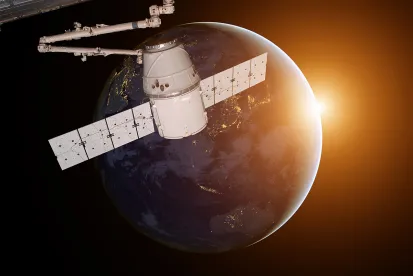The origination of Other Transaction Agreements (OTAs) traces back to the October 1957 launch of Sputnik I by the Soviet Union and the subsequent Space Race. Congress created the National Aeronautics and Space Administration (“NASA”) to quickly design and build new space technology. Following the creation of NASA, Congress granted the agency broad authority to “enter into and perform such contracts, leases, cooperative agreements, or other transactions as may be necessary” to carry out its mission. National Aeronautics and Space Act of 1958, Pub. L. No. 85-568, Section 203(5).
Although OTAs have been around for many years, since 2016 their use has, to use a pun, skyrocketed. Indeed, billions of appropriated funds are used to acquire the development of advanced technology through OTAs. Although OTAs have the benefit of decreasing the burden of the federal acquisition process, they also restrict a contractor’s ability to challenge their use.
The OTA model has proven to be quite successful and Congress extended this authority to several other agencies beyond NASA, including the Departments of Defense (“DoD”), Energy, Health and Human Services, Homeland Security, and several others. The DoD’s authority to enter into OTA derives from 10 U.S.C. §§ 4021-22, which enable three different types of OTA awards: Research, Prototype, and Production.
- Research OTAs are authorized under 10 U.S.C. § 4021, which enables the DoD to enter into transactions for basic, applied, and advanced research projects. Research OTAs may be used to pursue research and development of technology with dual-use (commercial and government) application. Research OTAs do not include authority for transition to follow-on production contracts or transactions.
- Prototype OTAs are authorized under 10 U.S.C. § 4022, which enables the DoD to carry out prototype projects that are directly relevant to enhancing the mission effectiveness of military personnel, supporting platform systems, components, or materials to be acquired by the DoD, or improvements to these tools. Successful Prototype OTAs offer a streamlined method to transition into follow-on production agreements without competition.
- Production OTAs are authorized under 10 U.S.C. § 4022(f), which enables the DoD to award a follow-on production contract or transaction, without competitive procedures, to the participants in a successful Prototype OTA that was competitively awarded and successfully completed.
Compare these statutes to 10 U.S.C. § 4023, which permits the DoD to procure certain supplies, including medical, telecommunications, and aeronautical supplies by contract or otherwise. This statute anticipates the use of a contract, at least in some circumstances, to procure an item. Because it is likely that an agency may use a contract to procure these supplies, the Government Accountability Office (“GAO”) does not consider § 4023 an OTA statute. See Air Tractor, Inc., B-418244, B-418244.2, Feb. 10, 2020, 2020 CPD ¶ 42 at 4-5 n. 2.
While many regulations governing federal contracts do not apply to OTAs (such as the Federal Acquisition Regulation (“FAR”) and the Competition in Contracting Act (“CICA”)), the Procurement Integrity Act does apply and as such, competitive practices are applicable to OTA solicitations. This means that, like standard contracting vehicles, OTAs may be protested to the U.S. Court of Federal Claims (“COFC”) or to the GAO.
It is important to note, however, that an OTA is not the same as a procurement contract, cooperative agreement, or grant. This means that the government and private companies have more flexibility in negotiating the terms and conditions of OTA, as compared to standard contract vehicles. This also means that disappointed offerors are more limited in protesting an OTA award at the GAO and COFC.
GAO OTA Jurisdiction
The GAO has limited jurisdiction to review OTA decisions. Under CICA and the GAO’s Bid Protest Regulations, the GAO’s jurisdiction is confined to protests concerning alleged violations of procurement statutes or regulations by federal agencies in the award or proposed award of procurement contracts and their preceding solicitations. 31 U.S.C. §§ 3551(1), 3552; 4 C.F.R. § 21.1(a). Where an agency has statutory authority to use OTAs, OTAs entered into by the agency are not subject to the GAO’s bid protest jurisdiction. 4 C.F.R. § 21.5(M); System Architecture Information Technology, B-418721, June 2, 2020, 2020 CPD ¶ 184 at 2; MD Helicopters, Inc., B-417379, Apr. 4, 2019, 2019 CPD ¶ 120 at 2. For example, in System Architecture Information Technology (SAIT), the protester challenged the evaluation and subsequent elimination of its white paper from consideration during the agency’s exercise of its OTA. SAIT did not allege that the agency improperly used its OTA authority to acquire goods or services that should have been acquired using a procurement contract and, thus, the GAO readily determined that it did not have jurisdiction over the protest.
There is, however, one exception to this general rule. The GAO may hear a protest of an agency’s allegedly improper use of its statutory OTA authority to acquire goods or services that should be acquired via a procurement contract. Id. Beware, where an agency is improperly using its OTA authority, any protest concerning the agency’s use of that authority must be filed prior to the time for receipt of initial proposals. 4 C.F.R. § 21.2(a)(1); Exploration Partners, LLC, B-298804, Dec. 19, 2006, 2006 CPD ¶ 201 at 6 n.4; Spartan Medical, Inc., B-419503, Feb. 26, 2021, 2021 CPD ¶ 109 at 2. In Spartan Medical, for example, the protester challenged the Department of Air Force’s “improper use” of the agency’s prototype OTA authority for the procurement of COVID-19 testing supplies after it submitted a response to the solicitation and had been eliminated from consideration. The GAO determined that the protester’s challenge to the agency’s use of its OTA was untimely and that the challenge to the agency’s evaluation of its response was outside of the GAO’s bid protest jurisdiction.
Further reminding contractors that OTAs are essentially insulated from review, the GAO held in Air Tractor that the DoD properly relied upon its “experiential purchasing” authority under 10 U.S.C. § 4023 to procure experiential aircraft in a follow-on award, despite the agency’s initial use of its § 4022 prototype OTA to compare the candidate aircraft. The GAO held that the agency’s purchase of the aircraft was acceptable under the agency’s § 4023 authority, because it met the requirements of this statute alone, thereby highlighting the broad scope of this authority.
COFC OTA Jurisdiction
In contrast to the GAO’s very narrow bid protest jurisdiction, the COFC appears more willing to take jurisdiction over at least some protests relating to OTAs. In Hydraulics International, Inc. v. United States, 161 Fed. Cl. 167 (2022), the COFC took jurisdiction over a protest involving an OTA prototype award for Aviation Ground Power Unit prototypes used to service military helicopters where it found that the award could lead to a potential follow-on procurement contract. Here, the agency’s request for enhanced whitepapers provided that, “[u]pon a determination that this competitively awarded prototype project has been successfully completed, this project may result in the award of a follow-on production contract….” Following the elimination of its whitepaper, Hydraulics International challenged the OTA award, alleging that the Army misevaluated its proposal. The agency argued that the COFC lacked jurisdiction over this protest as this OTA prototype acquisition was not “in connection with a procurement or a proposed procurement” as required under 28 U.S.C. § 1491(b)(1) (the “Tucker Act”), because any follow-on production was conditional. The COFC rejected this argument and held that the OTA was a part of the agency’s “process for determining a need for acquisition,” and was in connection with a proposed procurement, thereby giving the court jurisdiction under the Tucker Act.
It appears that, where a protester reasonably alleges that an OTA award is in “connection with a procurement or a proposed procurement,” and the agreement includes language suggesting it “may result in a production contract,” the COFC will likely exercise jurisdiction over the protest.
Conclusion
Navigating the unique protest parameters of an OTA can be complex and challenging. Additionally, the GAO and COFC maintain different standards for jurisdiction over OTA awards. While GAO rulings appear to further restrict OTA review, the COFC is more open to future OTA protests. It is critical for companies who are partnered with, or who seek to partner with, the federal government through OTAs, to understand these parameters when deciding whether to file a protest related to an OTA.




 />i
/>i
